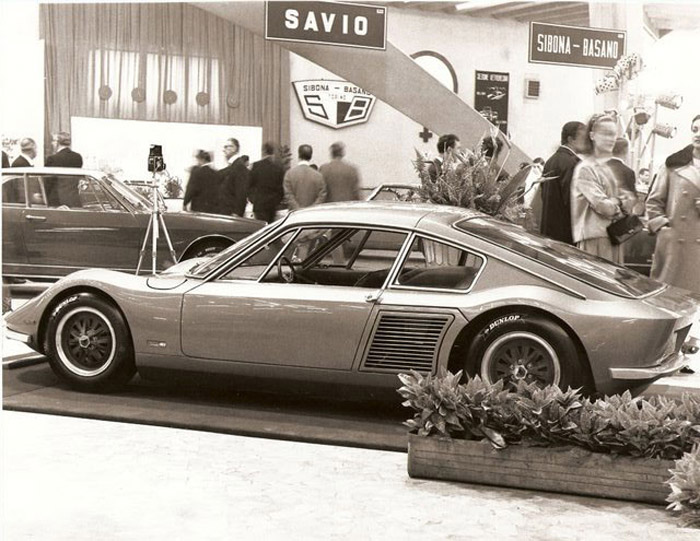-
Administrator

The Elva GT160

An article in a recent issue of Classic & Sports Car mag has rekindled my enthusiasm for the beautiful little Elva GT160. So named due to its projected top speed, the Elva in fact never achieved its true potential, and only three cars were ever built. But it remains one of those interesting stories that makes you wonder what could have been, had everything worked out as planned.
The Elva GT160 was one of the very first mid-engined production sports cars to be built, and caused a sensation when two examples were displayed at the London Racing Car Show, and the Turin Motor Show in early 1964. Powered by a single overhead-cam BMW 2 litre motor, and measuring just 40” in height, the dramatic little car became the subject of several magazine articles. It featured a tube-frame chassis, while the body styling was by Trevor Fiore, who’d go on to make quite a name for himself, designing, among others, the one-off TVR Trident, which became the break-away Trident Clipper V8, plus the Monterverdi Hai. In fact, the rear-end styling treatment of the Elva GT160 shares many similarities with the Trident.
Originally, Ogle Design was to style the GT160s body shape, but the sudden death of David Ogle had Elva looking elsewhere. Once Fiore had created the beautiful body shape, Fissore in Italy was charged with sculpting the alloy bodies. It was thanks to Peter Agg, whose Trojan company had bought the rights to manufacture the successful Courier when Elva struck financial trouble in 1961, that the Italian connection was made, thanks to Aggs UK importing of the Lambretta. Over time, Elva would become further merged into Trojan, with Elva founder Frank Nichols slowly distancing himself from the company.
Almost immediately, the GT160 was struck with problems that would ultimately kill it off before the project had really even got going. Firstly, it was too heavy. The goal weight was in the low 600kg region, but the GT160 came in far heavier. Then, the Italian built bodyshells were hit with an additional 15% tax, which ballooned both the manufacturing, and sales price. Finally, it was discovered the cars ground clearance was too low to qualify as a production GT sports car. These issues could have been overcome, with the manufacturing of fibreglass bodies in the UK for the production cars, which would help cure both the weight problem, and the cost to build each car, although the ground clearance issues weren’t quite so easily solved.
To qualify as a production sports car, Elva would need to produce 100 cars, but the project was cancelled after just three had been made. With Elva now merged into Trojan, and Trojans new contract to build McLaren sports cars for privateer customers, the little Elva GT160 was quietly cancelled and forgotten.
One car did race. Purchased by Sir Richard Wrottesley, he planned to take the car to Le Mans in 1965, where it’d compete in the 2-litre Prototype class. He had it put through a major rebuild, having the engine canted over 17 degrees, with weight being reduced wherever possible, and wider wheels fitted to the rear. The car competed at a single club day at Croft, before it was sent to France for the Le Mans tests in April. Its speed wasn’t good enough to threaten the Porsche 904s or Alfa TZs, which were pace setters in 2.0GT, the class Elva was designed for. Wrottesley then entered it in the Nurburgring 1000km where it failed to finish.
For Le Mans, Wrottesley, along with Tony Lanfranchi, retired after just 29 laps, with firstly driveshaft, then clutch failure, although not before the car had hit 165mph down The Mulsanne.
All three GT160s survive, and at least two are active in historic racing, with the C&SC feature car having been well developed to the point its now not far off the pace of the Ford GT40s.
It would have been interesting to have seen Trojan/Elva continue with the GT160, to have gotten it down to its target weight, and to have built the minimum 100 cars to qualify it for FIA GT. These cars surely could have gone on to big things, and today, rather than being an obscure oddball few have ever heard of, to instead be a force in historic racing.
-
Semi-Pro Racer

That certainly is one smart looking car. I vaguely remember hearing about it in period.
 Posting Permissions
Posting Permissions
- You may not post new threads
- You may not post replies
- You may not post attachments
- You may not edit your posts
-
Forum Rules




 Reply With Quote
Reply With Quote
